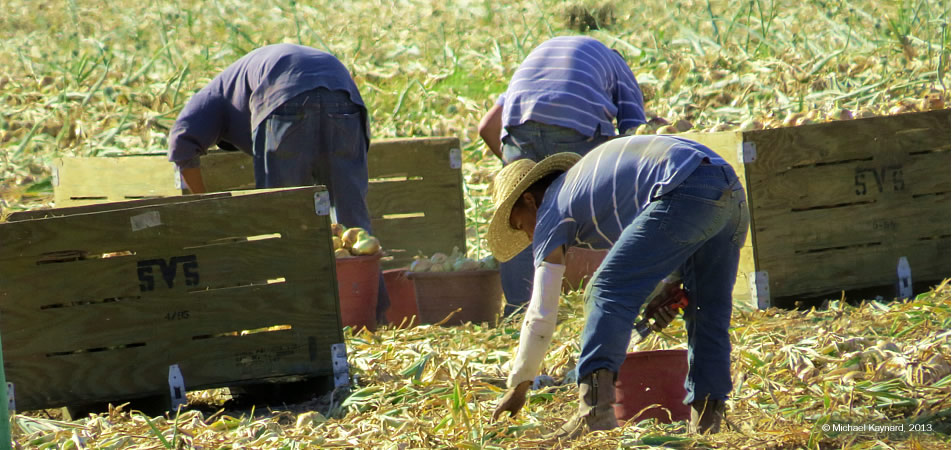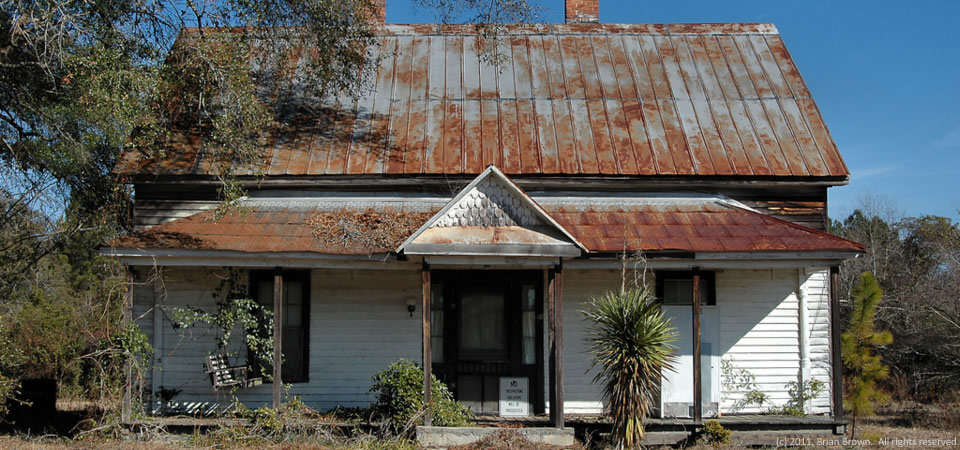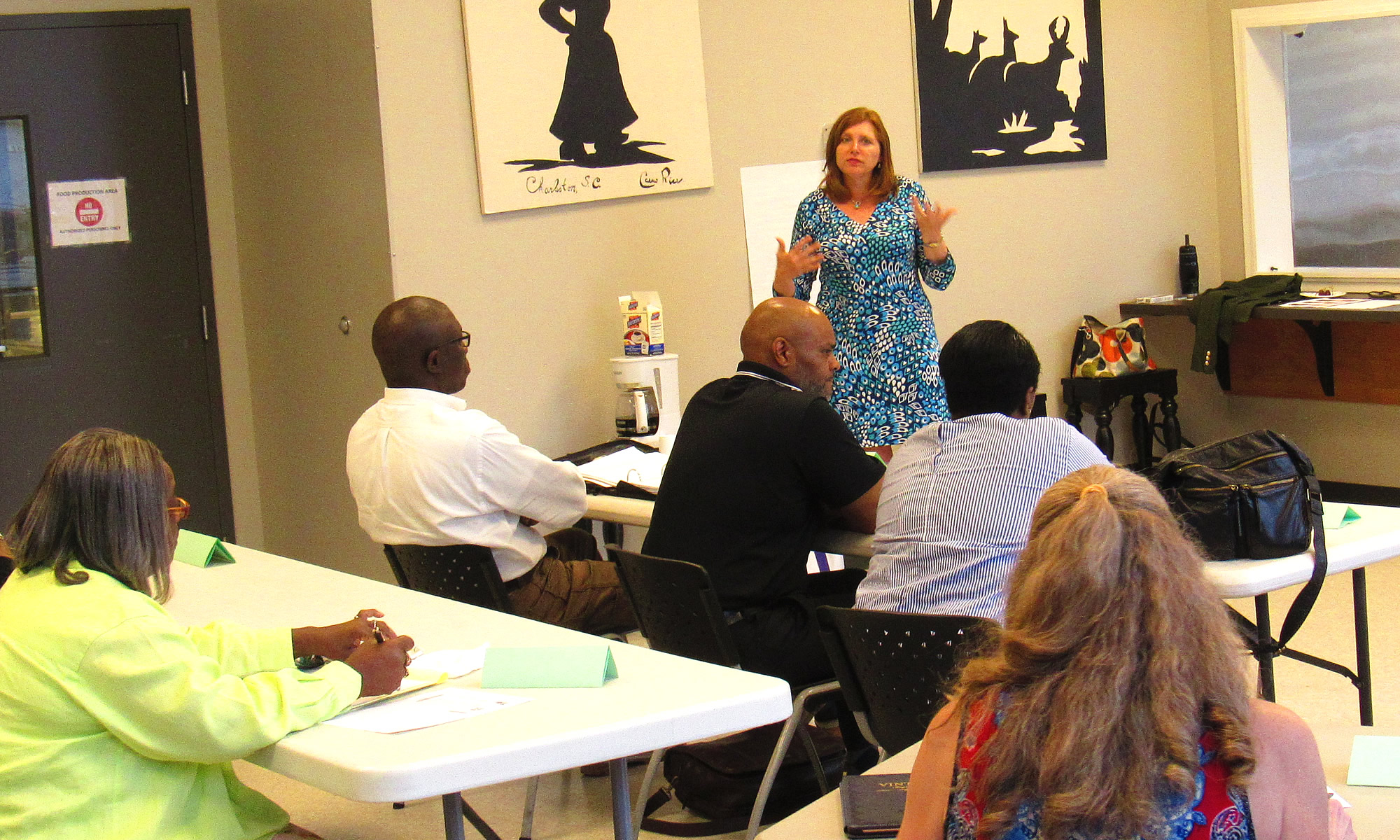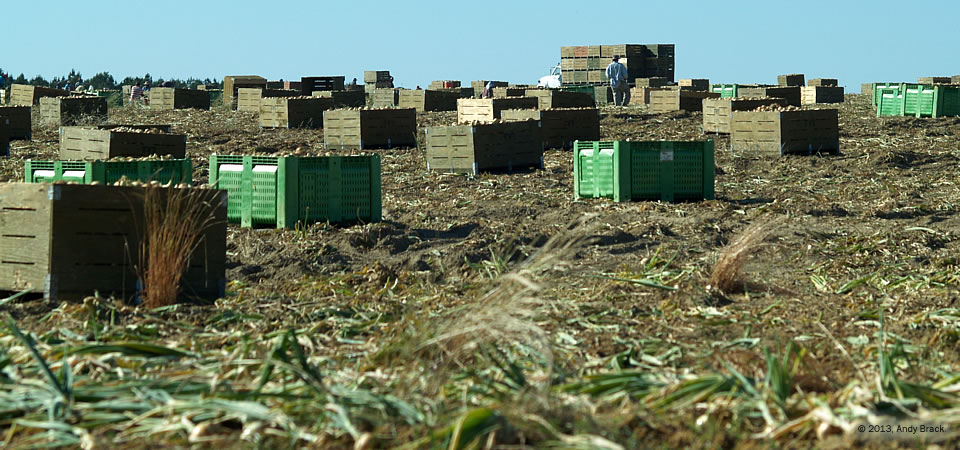
Picking onions is dirty, back-breaking work, as highlighted in this huge onion field in Cedar Crossing, a few miles south of Vidalia, Ga.,
Photographer Michael Kaynard noted that workers, who appeared to be migrant Latinos transported to the field in a dusty blue bus, harvested hour after hour to fill tan and green onion bins.
“The only positives was that it did not appear to be overly dusty or hot, yet,” he said. “I cannot imagine having to work bent over day after day. It makes me feel guilty about the food that we eat and how hard other human beings have to work to help provide it to us.”
As we noted in a previous post, the world-famous Vidalia onions seem to have made the Toombs County area more prosperous than neighboring counties. Still, about 25 percent of county residents live below the poverty level. The median household income is $32,464 — more than $17,000 below the national average.
The region has been in the news lately as labor unions and immigrant groups continue to accuse farmers of exploiting Mexican guest workers who do much of the backbreaking harvest work in May. And now, a group of mostly black American workers in the area are complaining they have a tough time getting work in the fields because of a preference for foreigh guest workers, as highlighted in this May 6 story in The New York Times.
Photo taken May 14, 2013, by Michael Kaynard of Kaynard Photography. All rights reserved.





